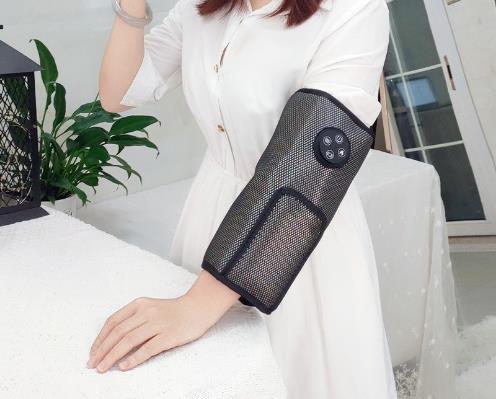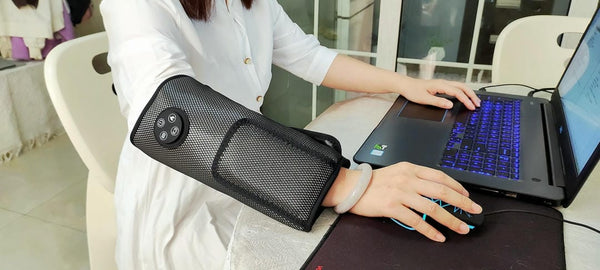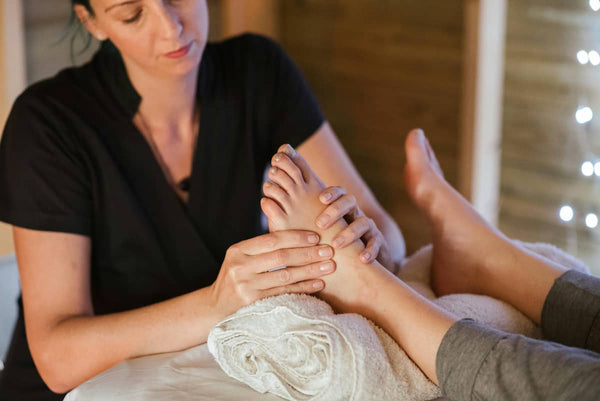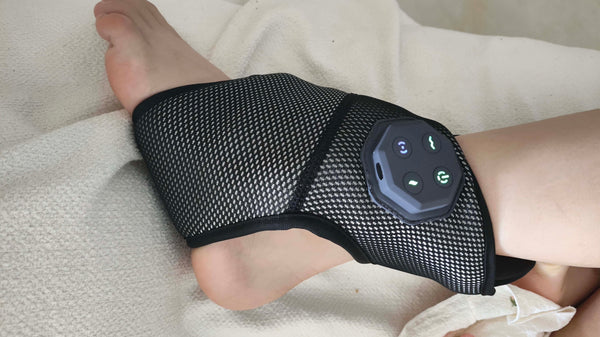
Wondering if your favorite portable massage device, like a KLcosy, can go in your checked bag? It's a common question for office workers, athletes, and anyone seeking relief on the go, clouded by sometimes confusing rules, especially around lithium batteries. Generally, the answer depends heavily on the battery type and individual airline policy. Truth be told, non-lithium or USB-powered options are often the safest bet if you're planning to use your massager for a massage at home feeling while traveling and want to pack it in checked luggage.
Experiences of Travelers Carrying Massagers in Checked Luggage
Many travelers have reported successfully carrying massagers on their trips, especially compact portable massagers like those from the KLcosy series. However, experiences vary. You can find numerous stories shared on online forums and travel blogs: some post that they "took their KLcosy portable massager in checked luggage when traveling to Bali with no issues," while others recount that "my massager with a large lithium battery was stopped by security at the checkpoint." What's the key difference? It often lies in the battery type, capacity, and whether it's removable.
The KLcosy series massagers are often praised for their "light travel" design and are a popular choice for travel-friendly massagers. They are compact and don't take up much space, but batteries remain a key consideration for airport security. Therefore, while many people pass through security smoothly, not understanding the underlying rules cannot guarantee a trouble-free experience. Have you ever wondered why this is a critical issue?
Core Question: Why Are Lithium Batteries in Massagers a No-Go in Checked Luggage?
Lithium batteries are widely used in modern portable massagers and countless other electronic devices and are regarded as a potential fire hazard by global aviation authorities. This is no small matter but a serious safety concern. The Australian Transport Safety Bureau (ATSB), the International Air Transport Association (IATA), the Federal Aviation Administration (FAA) of the United States, and other global agencies all emphasize the "thermal runaway" risk of these batteries. In simple terms, these batteries can overheat and catch fire. If this occurs in the cargo hold of an aircraft, the fire can spread rapidly and be difficult to detect, leading to catastrophic consequences. This is not just about the devices you use for quick home massages but also about global aviation safety standards.
"As a senior assessor in the healthcare field and a consultant for family health product selection, I must stress: never assume that lithium battery-powered massagers can be placed directly in checked luggage."
Regulations from the ATSB and other agencies clearly state that although devices with lithium-ion batteries (typically not exceeding a certain watt-hour rating, such as 100Wh, and occasionally up to 160Wh with airline approval) may be allowed in carry-on luggage, they are strictly restricted or even prohibited in checked luggage. Spare lithium batteries are almost universally prohibited in checked luggage and must be carried on board.
Understanding watt-hours (Wh) is crucial; it's like the "fuel tank" capacity of the battery. Most personal electronic devices with lithium batteries (including travel-friendly massagers) are usually below the 100Wh limit. However, always check the battery specifications on the device or in the manual.
A simpler option: USB-powered massagers and battery-free massagers for worry-free travel
So, how to avoid the battery dilemma? Opting for USB-powered models (such as some versions of the KLcosy series specifically designed without built-in lithium batteries) or completely battery-free portable massagers can effectively eliminate battery concerns in checked luggage. Many users, especially those who advocate for "light travel," find USB-powered devices a game-changer: no need to worry about battery issues, no last-minute panic at security checkpoints, just plug them into a USB power bank or wall socket at your destination. This approach greatly simplifies the process of choosing a massager, allowing you to focus on the massage function rather than complex battery regulations.
This strategy is ideal for frequent flyers, minimalist packers ("light travel" enthusiasts), or anyone hoping to avoid airport delays or having their items confiscated. Whether you are an office worker who needs to quickly relieve muscle fatigue during business trips, a person who needs regular massage therapy due to sports injuries, or a middle-aged person who wants to relieve body stiffness during travel, this is a reliable and stress-free choice to meet your portable massage needs.
How to Choose the Best Portable Massager for Travel
 When looking for the best portable massager for travel, you must strike a balance between effectiveness and compliance. The safest option is to prioritize non-lithium battery devices (such as USB-powered or manual massagers) in your checked luggage. If your preferred massager does contain a lithium battery, ensure it is a low-power model with a clearly marked watt-hour rating and plan to carry it in your carry-on luggage.
When looking for the best portable massager for travel, you must strike a balance between effectiveness and compliance. The safest option is to prioritize non-lithium battery devices (such as USB-powered or manual massagers) in your checked luggage. If your preferred massager does contain a lithium battery, ensure it is a low-power model with a clearly marked watt-hour rating and plan to carry it in your carry-on luggage.
When clients ask me, "Which are the best portable massage tools for travel?" or "How do I choose a portable massage device based on battery life during flights?", my advice always starts with checking the battery. Here are the factors I suggest they consider:
- Battery type: Is it a lithium-ion battery, nickel-metal hydride (NiMH), USB-powered, or manual? This is a fundamental checkpoint when choosing any travel-friendly massager.
- Watt-hours (Wh): If it's a lithium battery, you must know its Wh rating. Most airlines limit devices in carry-on luggage to 100Wh, while some allow up to 160Wh but require prior approval. Be sure to verify this detail.
- Is the battery removable: If the massager has a removable lithium battery, like a power bank, even if airlines (in rare cases) allow the device body in checked luggage, the power bank almost always must be carried on and its electrodes should be protected (e.g., wrapped with tape or placed in the original retail packaging).
- Portability and design: Besides the battery, consider the size and weight. Does it truly align with the "light travel" concept? Is it small enough to fit in carry-on luggage or not be a burden when checked?
Is the portable massage device easy to clean?
This is a practical issue, especially for items that may be used in different environments during travel. Fortunately, most modern portable massage devices are designed with hygiene in mind, using easy-to-clean materials. When looking for a device that is easy to maintain during travel or at home, this is a crucial feature.
As a health product advisor, I recommend choosing massagers with seamless silicone or smooth, high-quality plastic massage heads. These surfaces are less prone to bacterial growth and can be easily wiped clean. Avoid massagers with fixed fabric covers on the massage nodes unless these fabric parts are specifically designed to be wipeable. For most quality devices, a quick wipe with an antibacterial cloth or disinfectant wipe will keep your travel-friendly massager clean and ready to use. This simple step can greatly enhance your healthy travel experience.
Packing List for Carrying a Massager
To ensure your chosen portable massage tool doesn't become an unexpected hassle during travel, here is a practical "pitfall avoidance" checklist. If you are wondering "Can I find a compliant portable massager before travel?" or just want to pack your existing device, this can serve as a pre-flight guide for carrying a massager:
- Determine the power source type of the massager: Is it a lithium battery (ion or polymer), another type of battery (NiMH, alkaline), USB-powered (no built-in battery), or completely manual? This is the absolute first and most crucial step.
- Check the specific airline and airport security regulations: Don't rely on general advice or past experience. Visit the airline's official website (look for "restricted items" or "dangerous goods") and the airport security management agency's website (such as the US TSA, Canada CATSA, Australia ATSB guidelines, etc.) to learn the latest regulations. These rules may vary depending on international travel and connecting flights.
-
Lithium Battery Precautions - Golden Rule:
- Priority carry-on / Usually mandatory: If your massager is equipped with a lithium battery (and within the airline's Wh limit, typically under 100Wh), it must be placed in your carry-on luggage.
- Turn off and protect: Ensure the device is completely turned off and properly packaged to prevent accidental activation. Some people use the original box or wrap it in clothing.
- Spares: Strictly carry-on only. Must protect the electrodes from short circuits (e.g., wrap with tape, place in original retail packaging, or in a separate plastic bag).
-
Check-in luggage precautions (if carrying battery-powered devices is necessary):
- Strongly recommend against checking in any device with lithium batteries, unless the airline explicitly allows specific models and battery sizes (user-accessible / removable lithium batteries in consumer electronics rarely receive such permission).
- If, after thorough inquiry, the airline permits specific devices with built-in and non-removable lithium batteries to be checked in, ensure the device is completely turned off and properly packaged to prevent damage or accidental activation.
- The safest check-in option: USB-powered massagers (externally powered, no built-in lithium batteries), devices using non-lithium batteries (such as AAA batteries, if available), or manual massage tools, which are usually safe to check in.
- Medical proof (if necessary): If you must carry a specific electronic massager for medical reasons, it is advisable to carry a doctor's note or relevant medical information. However, note that medical proof typically does not override airline safety regulations regarding high-capacity lithium batteries.
- Consult or send if in doubt: If you still have questions after consulting online resources, contact the airline as early as possible before departure. If your favorite device is not compliant, you may consider sending it to your destination.
Carrying portable massage devices while traveling doesn't have to be a source of stress. By fully understanding the key role of battery types (especially lithium-ion batteries) and proactively checking the latest regulations, you can pack your massager with confidence and enjoy its benefits during your trip. A little preparation can make your travel smoother and more relaxed. Make a wise choice of a travel-friendly massager and pack it smartly to keep travel aches at bay!




0 comments